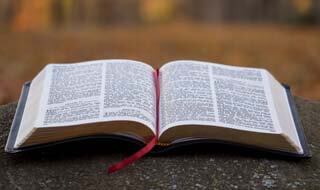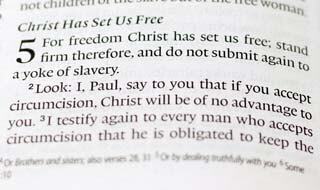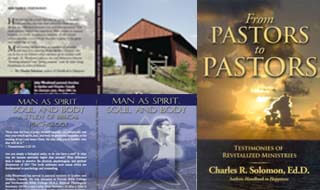As Canadians and American’s observe a Thanksgiving holiday each fall, the Jewish people also have days of special thanksgiving and celebration; these are based on events recorded in the Tanakh (Old Testament). One of these holidays is the feast of Purim, which commemorates the deliverance of the Jewish people in the Persian empire from the murderous edict that was instigated by Haman. God used Mordecai and Queen Esther to turn the day planned to wipe out Israel to an occasion of their defense and victory. [1]
The biblical account of this horrific plot and providential deliverance is recorded in the book of Esther. This dramatic story has been popularized in modern times through movies, such as One Night with the King. [2]
In this article, we will survey the book of Esther, and then consider symbolism that illustrates how the believer can experience victorious life in Christ.
Summary of the Book of Esther (from The International Standard Bible Encyclopedia)
The book is characterized by supreme dramatic power. The scene is Shushan the palace, … the fortified residence of the Persian kings. The book opens with the description of a high festival. All the notabilities of the kingdom are present, together with their retainers, both small and great. To grace the occasion, Vashti is summoned to appear before the king’s guests; and, to the dismay of the great assembly, the queen refuses to obey. A council is immediately summoned. Vashti is degraded; and a decree is issued that every man bear rule in his own house (Esther ch.1; 483 B.C.). To find a successor to Vashti, the fairest damsels in the empire are brought to Shushan; and Hadassah [Esther], the cousin and adopted daughter of Mordecai, is of the number. Esther (ch. 2) closes with a notice of two incidents: (1) the coronation of Hadassah (now and henceforth named “Esther”) as queen; (2) Mordecai’s discovery of a palace plot to assassinate the king. Chapter 3 introduces another leading personage, Haman, the son of Hammedatha, whose seat the king had set “above all the princes that were with him.”
All the king’s servants who are at the king’s gates prostrate themselves before the powerful favorite. Mordecai, who is not a trained courtier but a God-fearing Jew, refrains. Though expostulated with, he will not conform. The matter is brought to Haman’s notice for whose offended dignity Mordecai is too small a sacrifice. The whole Jewish people must perish. Lots are cast to find a lucky day for their extermination. The king’s consent is obtained, and the royal decree is sent into all the provinces fixing the slaughter for the 13th day of the 12th month.
The publication of the decree is followed by universal mourning among the Jews (ch. 4). News of Mordecai’s mourning is brought to Esther, who, through the messengers she sends to him, is informed of her own and her people’s danger. She is urged to save herself and them. She eventually decides to seek the king’s presence at the risk of her life. She presents herself (ch. 5) before the king and is graciously received. Here we breathe the atmosphere of the place and time. Everything depends upon the decision of one will–the king’s. Esther does not attempt too much at first: she invites the king and Haman to a banquet. Here the king asks Esther what her petition is, assuring her that it shall be granted. In reply she requests his and Haman’s presence at a banquet the following day. Haman goes forth in high elation. On his way home he passes Mordecai, who “stood not up nor moved for him.” Haman passes on filled with rage, and [pours out his frustrations] to his wife and all his friends. They advise that a [gallows], fifty cubits high, be prepared for Mordecai’s [hanging]; that on the morrow he obtain the royal permission for Mordecai’s execution; and that he then proceed with a merry heart to banquet with the queen. The [gallows] is made ready.
But (ch. 6) that night Xerxes cannot sleep. The chronicles of the kingdom are read before him. The reader has come to Mordecai’s discovery of the plot, when the king asks what reward was given him. He is informed that the service had received no acknowledgment. It is now early morning, and Haman is waiting in the court for an audience to request Mordecai’s life. He is summoned to the king’s presence and asked what should be done to the man whom the king desires to honor. Believing that the king can be thinking only of him, he suggests that royal honors be paid him. He is appalled by the command to do so to Mordecai. Hurrying home from his lowly attendance upon the hated Jew, he has hardly time to tell the mournful story to his wife and friends when he is summoned to Esther’s banquet. There, at the king’s renewed request to be told her desire, she begs life for herself and for her people (ch. 7). The king asks in astonishment, who he is, and where he is, who dared to injure her and them. The reply is that Haman is the adversary. Xerxes, filled with indignation, rises from the banquet and passes into the palace garden. He returns and discovers that Haman, in the madness of his fear, has thrown himself on the queen’s couch, begging for his life. That act seals his doom. He is led away to be [hanged] upon the very [gallows] he had prepared for the Jew. The seal of the kingdom is transferred to Mordecai (ch. 8). Measures are immediately taken to avert the consequence of Haman’s plot (chs. 9-10). The result is deliverance and honor for the Jews. These resolve that the festival of Purim should be instituted and be ever after observed by Jews and proselytes. The decision was confirmed by letters from Esther and Mordecai.[3]
Symbolism
Without diminishing the historical value of this Old Testament book’s providential intent and moral power, Ian Thomas has also noticed significant New Covenant symbolism in it.[4] Like John Bunyan’s Pilgrim’s Progress, the story and symbolic meaning can help us grasp spiritual truths and appropriate them. This is the subject of Thomas’ book, If I Perish, I Perish: The Christian Life in Esther. Here are the major symbolic points:
The Persian king represents the human soul
Queen Vashti represents the unbeliever’s unregenerate human spirit
Queen Esther represents the believer’s regenerated human spirit
Mordecai represents the Holy Spirit
Haman represents the “flesh”
The kingdom represents the physical body
Here is Ian Thomas’ summary:
THE HOLY SPIRIT RESISTED [Gal. 5:16,17]
This was the first picture, portrayed by the situation recorded in…[Esther 3:1-15]. Outside the palace Mordecai was sitting in the king’s gate, while inside the palace Haman was plotting Mordecai’s destruction, fearful lest Mordecai, who refused to bow in his presence, should gain access to the king and bring about that change of government, which would introduce to the land those laws, which Haman hated.
THE HOLY SPIRIT RECEIVED [Eph. 1:13]
Though bitterly opposed by Haman, as the Holy Spirit will always be bitterly opposed, resented, and resisted by the flesh, …[Esther 2:5-9] spoke to us of the Holy Spirit coming to the human spirit, as Mordecai came into the life of Esther.
The basis was that of adoption, just as you and I must receive “the Spirit of Adoption,” if we are to be born again into the family of forgiven sinners — “the Spirit itself bearing witness with our spirit, that we are the children of God” (Romans 8:15,16).
THE HOLY SPIRIT GRIEVED [Eph. 4:30]
[Then in Esther 4:1-9]…, Mordecai sat clothed in sackcloth and ashes, crying with a loud and bitter cry. This picture brought to us a vivid illustration of what happens when the Spirit of God is grieved.
Mordecai had come into the life of Esther and she “…did the commandments of Mordecai like as when she was brought up with him” (Esther 2:20), but Mordecai had not yet come into the life of the king. Haman still dominated the scene and projected his evil influence throughout the kingdom.
Here portrayed is the defeated Christian [symbolized in the king], described by Paul in his epistle to the Romans — “So you see how it is; my new life tells me to do right, but the old nature [the flesh] that is still inside me loves to sin. Oh, what a terrible thing this is! Who will free me from my slavery to this deadly lower nature?” (Romans 7:24,25, Living Letters).
THE HOLY SPIRIT QUENCHED [1 Thess. 5:19]
This was the picture painted next, …[Esther 3:10-17]. Esther was reluctant to obey Mordecai’s instructions, and hesitated to go unsummoned into the presence of the king, thus to hazard her life in the interests of her people, that the seed of Abraham might not perish. Though his wickedness had been fully exposed to her, until Esther was prepared to die to her own ability to hang Haman, it was impossible for Mordecai to assume responsibility for putting this enemy into the place of death.
THE HOLY SPIRIT OBEYED [Eph. 5:18]
As it came to its climactic conclusion, …[the book] introduced us to the implications of true discipleship. On the third morning Esther, as good as dead, entered into the royal presence, and the king held out the golden scepter [Esther 5:1-3]. Losing her life, she found it again — to be identified forever with God’s purpose, God’s power, and God’s people.
Thus the decks were cleared for those events recorded [in Esther 6-8], which would enlighten the understanding of the king — and bring Haman to the gallows!
THE FULLNESS OF THE HOLY SPIRIT
With the enemy deposed, and Mordecai with the king’s ring upon his finger occupying his estate, and with the king and queen at one with each other in honoring Mordecai with all the executive powers of government, the stage had now been set for a new and glorious regime [Esther 8:8-17]. That regime, which, when established spiritually within your soul, means that not only does the Lord Jesus Christ live by His Holy Spirit within your human spirit, but that He now controls your mind, your emotions, and your will. By all that you do and say and are, His life and likeness are expressed through you.[4]
Significance
About the favorable use of such symbolism: Similarly, the Song of Solomon is primarily about the joys of romantic love in marriage, but it can also give devotional illustrations of the loving relationship Christ (the bridegroom) and His bride (the church – Eph 5:25-32).
When one considers how these symbols correspond to the believer’s salvation and sanctification, the parallels appear too numerous to be coincidental. Even so, the use of the story as a spiritual illustration provides helpful insights and motivation. As the Jews celebrate Purim, may we, as New Covenant believers, celebrate our deliverance and victory through Messiah Jesus.
Footnotes
[1] For an overview of Purim, see www.ifcj.org/learn/jewish-holidays/what-is-purim
[2] For a review of the movie, One Night with the King, see christiananswers.net/spotlight/movies/2005/onenightwiththeking2005.html
[3] John Urquhart, “Esther,” in The International Standard Bible Encyclopedia. Other summaries: illustrated overview video at BibleProject.com and an outline at JoyfulScriptures.com
[4] This secondary, allegorical perspective need not minimize the importance of grammatical-historical interpretation of Scripture. The New Testament records the fulfillment of types (Christ, the Passover Lamb – John 1:29; 1 Cor 5:7; Christ as the bronze serpent – Num. 21:9; John 3:14-16) and uses allegory with primary intent (John 15:1-8) and secondary intent (Gal. 4:22-31).
[5] Ian Thomas, If I Perish, I Perish; the Christian Life as Seen in Esther, (Zondervan, 1967), 92-95.
See also Ray Stedman, Adventuring Through the Bible, 227-235.
This article is copyrighted by John B. Woodward, 2002. Revised in 2025. Permission is given to reprint it for non-commercial use with credit given to the author and GraceNotebook.com. Biblical quotations are from the New King James Version, copyright 1982 by Thomas Nelson.

















